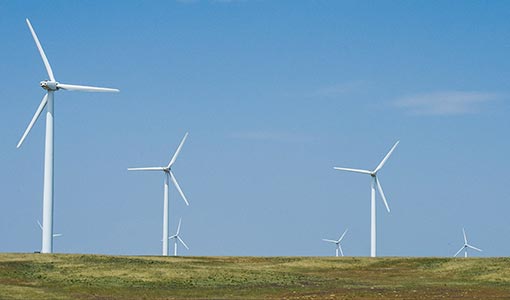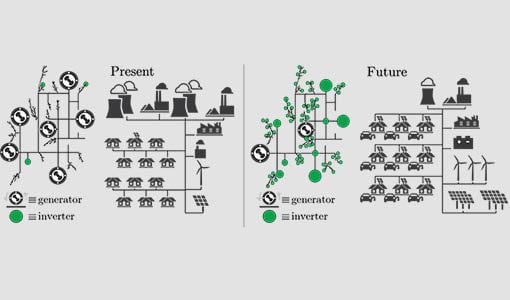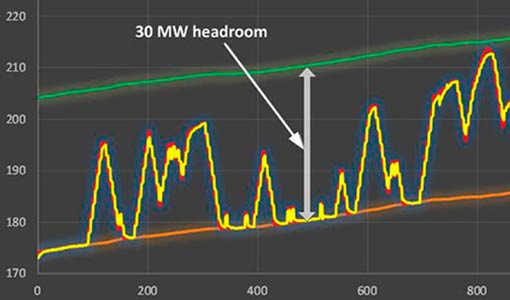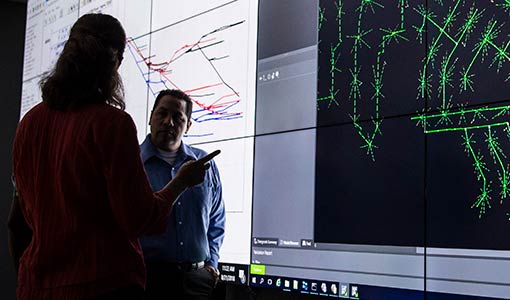Advanced Power Electronics and Smart Inverters
NREL’s advanced power electronics and smart inverter research enables high penetrations of renewable and distributed energy resources on the U.S. electricity grid to make it cleaner, reliable, and more efficient.
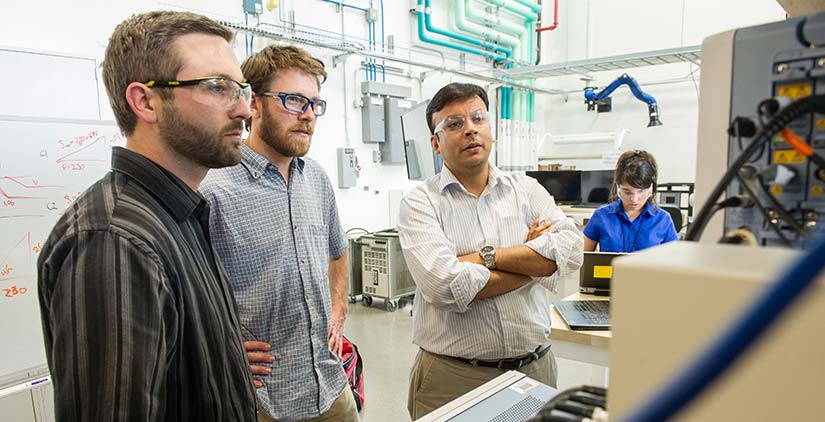
Integrating renewable and distributed energy resources, such as photovoltaics (PV) and energy storage devices, into the electric distribution system requires advanced power electronics, or smart inverters, that can provide grid services such as voltage and frequency regulation, ride-through, dynamic current injection, and anti-islanding functionality. To enable this integration, NREL is designing novel wide-bandgap smart inverters, developing robust control algorithms for better inverter functionality, determining interactions between multiple smart inverters and between inverters and utility distribution systems, supporting standards development for smart inverter functionalities, and analyzing the impacts of smart inverters on distribution systems.
Capabilities
- Modeling and simulation of smart inverters
- Design of smart inverter hardware and firmware
- Development of smart inverter control algorithms
- Development of wide-bandgap smart inverters
- Use of control and power hardware-in-the-loop techniques to determine interactions between multiple inverters at multiple points of common coupling
- Development and validation of test procedures for smart inverters to support IEEE 1547 and UL 1741
- Power system impact studies for smart inverter-interfaced distributed energy resources
Projects
Florida Power and Light commissioned a 1.1-MW AC PV solar canopy that shades parking spaces at the Daytona Motor Speedway in Daytona Beach, Florida. In addition to generating clean solar electricity, the site serves as a test platform for solar inverters. Thirty-six grid-connected inverters from eight inverter manufacturers are installed on site, allowing Florida Power and Light to gain insight into the products' efficiency, grid support performance, reliability, and cost.
Florida Power and Light partnered with NREL to provide performance evaluations of several of the inverter types installed at this site. In the Energy Systems Integration Facility, NREL researchers are able to test the inverters under a range of operating conditions in a controlled laboratory environment. Nine types of tests were run in this study: voltage ride-through, frequency ride-through, fixed power factor operation, frequency-watt control, volt/VAR control, efficiency, anti-islanding, load rejection overvoltage, and single- and three-phase faults.
Reaching Department of Energy goals of 20% wind energy by 2030 and 35% by 2050 requires a better understanding of power system reliability at high levels of wind energy penetration. These important questions need to be addressed to enable high-penetration scenarios:
- What is the role for short-term power storage to provide power variability smoothing for wind turbine drivetrain loads?
- How can advanced wind plant controls contribute to grid reliability enhancements?
- Can system stability and reliability be maintained with high instantaneous wind penetrations?
- What is the role of energy storage to firm wind power ability to provide such controls?
- How can other enabling technologies, such as response loads, help integrate high levels of variable power?
- What testing needs to be done to enable this transformation?
The goal of this project is to develop and test coordinated controls of active power by wind generation, short-term energy storage, and large industrial motor drives to provide ancillary services to the grid and minimize loading impacts, thereby reducing operation and maintenance costs and the cost of energy generated by wind power.
Contact
Share
Last Updated March 17, 2025

